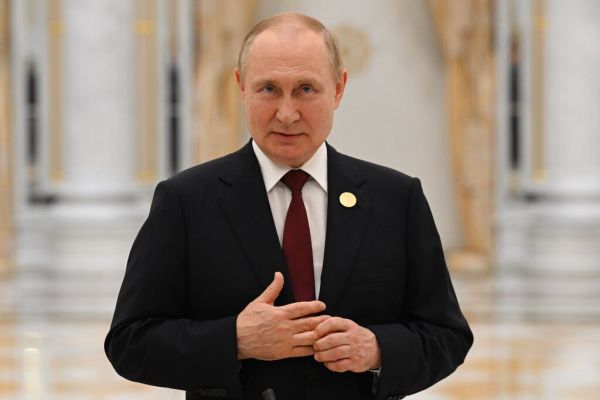The U.S. reacted quietly, saying it is monitoring the situation.
By Batya Jerenberg, World Israel News
Russia will station part of its tactical nuclear weapons supply in friendly Belarus, President Vladimir Putin announced on Saturday, in what could be seen as a threat to neighboring Ukraine.
Putin compared the move to the United States’ policy in NATO-aligned countries in Europe.
“There is nothing unusual here either,” the Russian leader told state television. “Firstly, the United States has been doing this for decades. They have long deployed their tactical nuclear weapons on the territory of their allied countries.”
He added that Moscow would do this “without violating our international obligations on the nonproliferation of nuclear weapons.”
Moscow would keep all control of the weapons in its hands, as the U.S. does with its arsenal, he said.
Russia has not stationed any of its nuclear weapons in its near abroad since the days of the Soviet Union, but has been threatening to do so in recent months as its invasion of Ukraine stalled amidst heavy Western military backing of Kyiv. Several top Russian officials have also stated point-blank that if the West did not restrain itself, Russia could use tactical nuclear weapons in “self-defense,” which would escalate the conflict enormously.
The specific reason Putin gave in his speech for building a nuclear storage site over the next few months on Belorussian territory was that Great Britain had announced it would provide Ukraine with “tank-killers” – armor-piercing rounds containing depleted uranium. Putin stated, incorrectly, that the shells contain nuclear elements.
When Belarus was part of the Soviet Union, it reportedly had 81 single-warhead missiles in its territory, all controlled by Moscow. Five years after the Soviet Union’s collapse in 1991, Minsk transferred them all back to Russia.
However, in February last year, just after Russia invaded Ukraine, partially through Belarus, with its tight ally’s permission, the country dropped its non-nuclear status in a constitutional referendum.
In June, Belarus President Alexander Lukashenko officially asked his counterpart to help make his country’s air force nuclear-capable. In his interview, Putin said that Russian engineers had already converted ten jets, and that Moscow is sending nuclear-capable Iskander tactical missile systems that can be fitted on those planes as well.
The threat this poses is not limited to Ukraine, as Belarus borders three NATO countries – Poland, Lithuania and Latvia.
The Biden administration reacted guardedly to the announcement. State Department spokesperson Vedant Patel said in a statement to CNN that “We have not seen any reason to adjust our own strategic nuclear posture nor any indications Russia is preparing to use a nuclear weapon,” but that it would “continue to monitor the implications” of the Russian move.
Ukraine, also a former Soviet republic, had held up to a third of the Union’s nuclear weapons before its breakup. It, too, shipped the arsenal back to Russia in the 1990s, as did a third Soviet republic, Kazakhstan.
In exchange, the three now-independent countries received international security guarantees signed in 1994 by the Russian Federation, the U.S. and Great Britain in what was called the Budapest Memorandum.
Russia then illegally annexed Ukraine’s Crimean Peninsula in 2014, saying it was historically Russian territory. It invaded Ukraine 13 months ago ostensibly to “denazify” it, but the West considers it a land grab that would also prevent the country from going through with its stated intent to join the EU. Putin considers this an unacceptable Western threat to his near-abroad.


